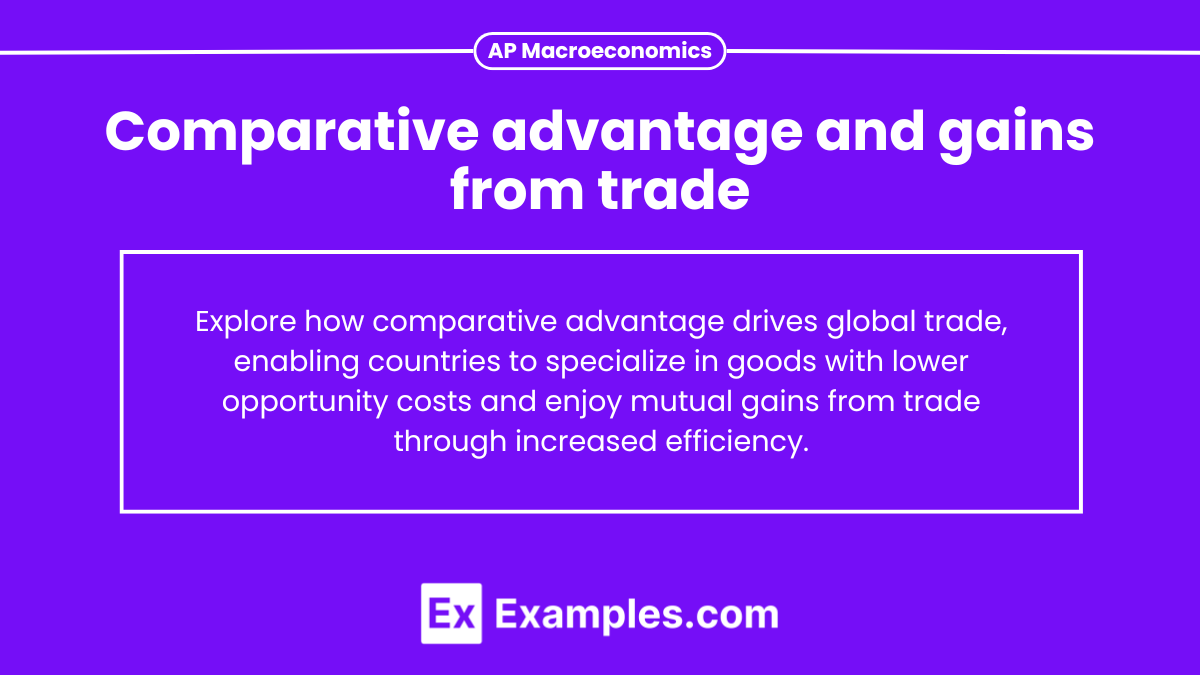Understanding comparative advantage and the gains from trade is crucial for excelling in the AP Macroeconomics exam. These concepts explain how countries benefit from specializing in certain goods and trading with others to improve overall efficiency and production. Follow these four steps to grasp the key ideas effectively:
Learning Objectives
For the AP Macroeconomics exam, you should understand the concept of comparative advantage, how it differs from absolute advantage, and the importance of opportunity cost. Learn how specialization and trade increase overall economic efficiency, allowing countries to consume beyond their production possibilities. Focus on calculating opportunity costs and explaining mutual gains from trade.
1: Definition of Comparative Advantage
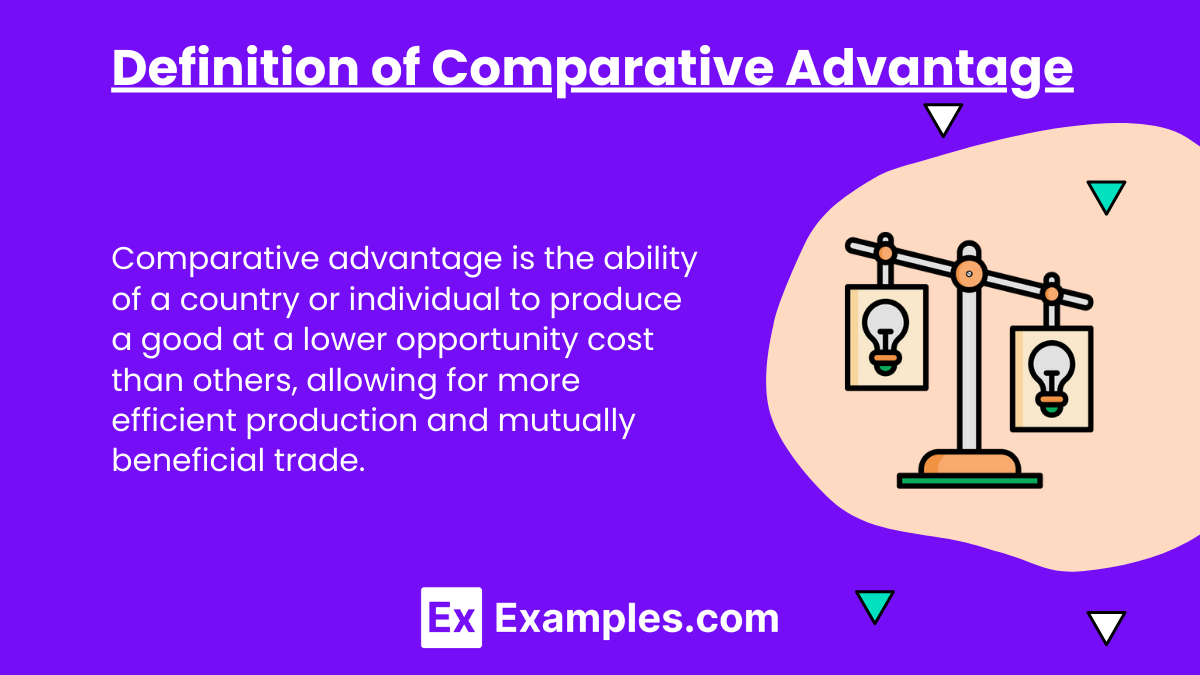
Comparative advantage refers to the ability of a country, firm, or individual to produce a good at a lower opportunity cost than others. This means they sacrifice less of other goods when they produce that particular good. Comparative advantage is different from absolute advantage, where a country can produce more of a good with the same resources.
- Focus on producing goods with the lowest opportunity cost to maximize efficiency.
- Comparative advantage explains why countries benefit from specializing in certain goods and trading with others.
2: Opportunity Cost and the Production Possibilities Curve
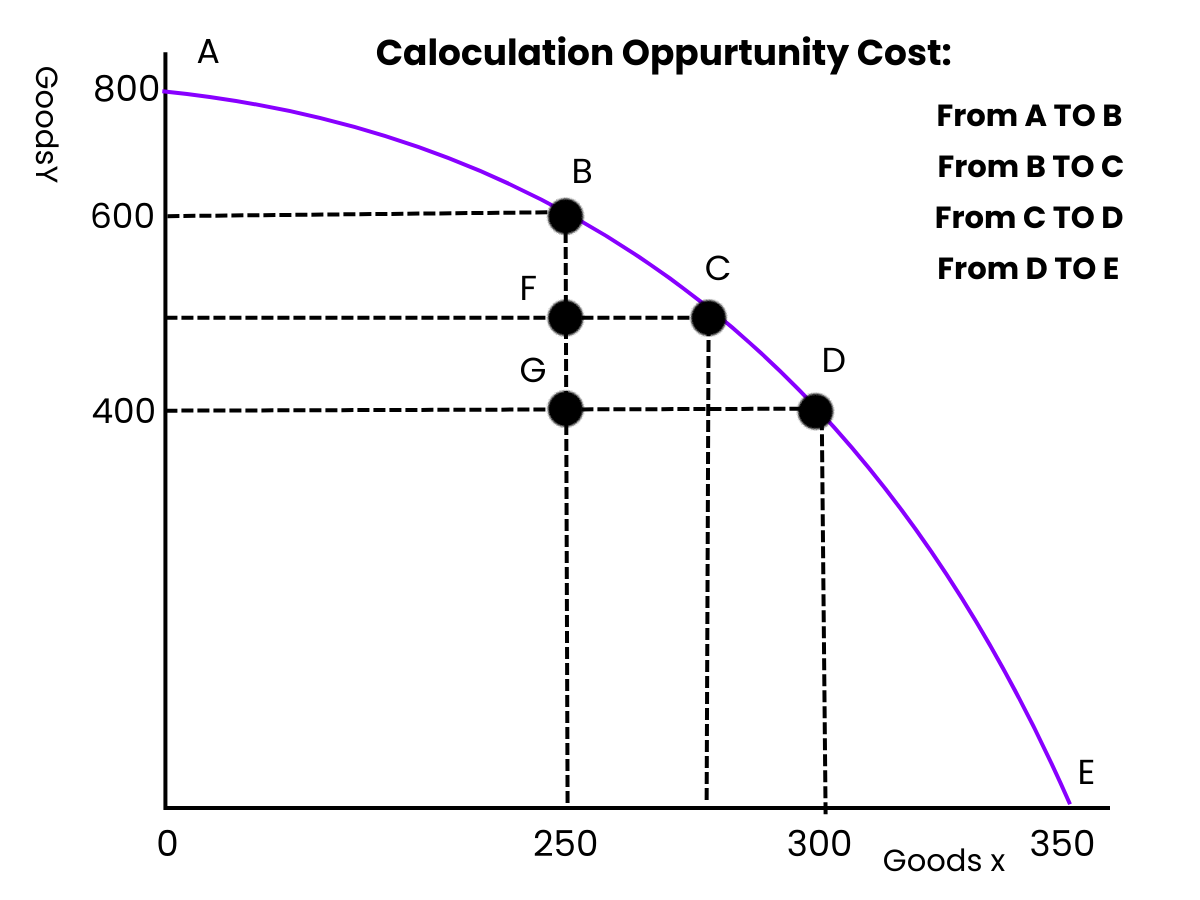
The Production Possibilities Curve (PPC) shows the maximum combinations of goods or services that can be produced with fixed resources and technology. The curve helps explain opportunity cost, which is the value of the next best alternative given up when making a choice.
- Points inside the curve indicate inefficient use of resources.
- Points on the curve represent the most efficient allocation of resources.
- Points outside the curve are unattainable without trade.
Countries will specialize in the goods where they have the lowest opportunity cost, allowing them to operate more efficiently and shift resources to other productive uses.
3: Specialization and Gains from Trade
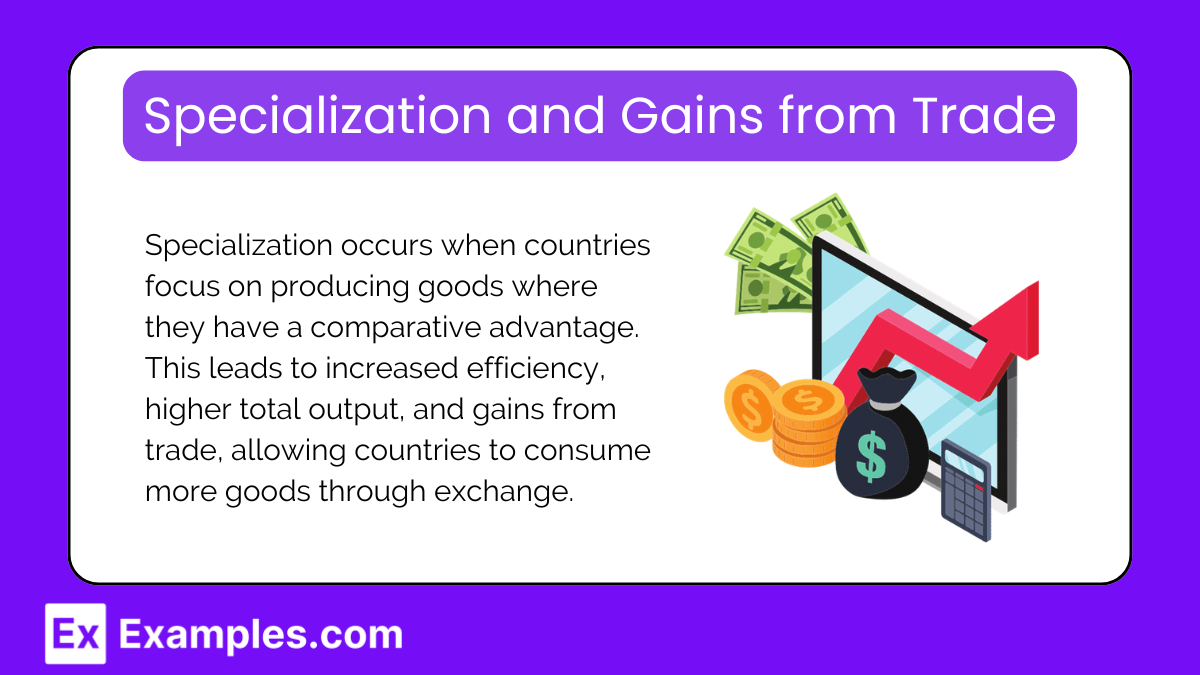
Specialization occurs when a country focuses on producing the good for which it has a comparative advantage. This leads to an overall increase in total production and efficiency.
- Gains from trade refer to the increase in consumption and production achieved when countries specialize and trade.
- By trading, countries can consume beyond their production possibilities and access more goods than they could produce alone.
For mutual benefit, countries must agree on favorable terms of trade, which lie between the opportunity costs of the goods being traded. Both countries gain because they can trade for goods at a lower opportunity cost than producing them domestically.
4: Applying Comparative Advantage in Real-World Contexts
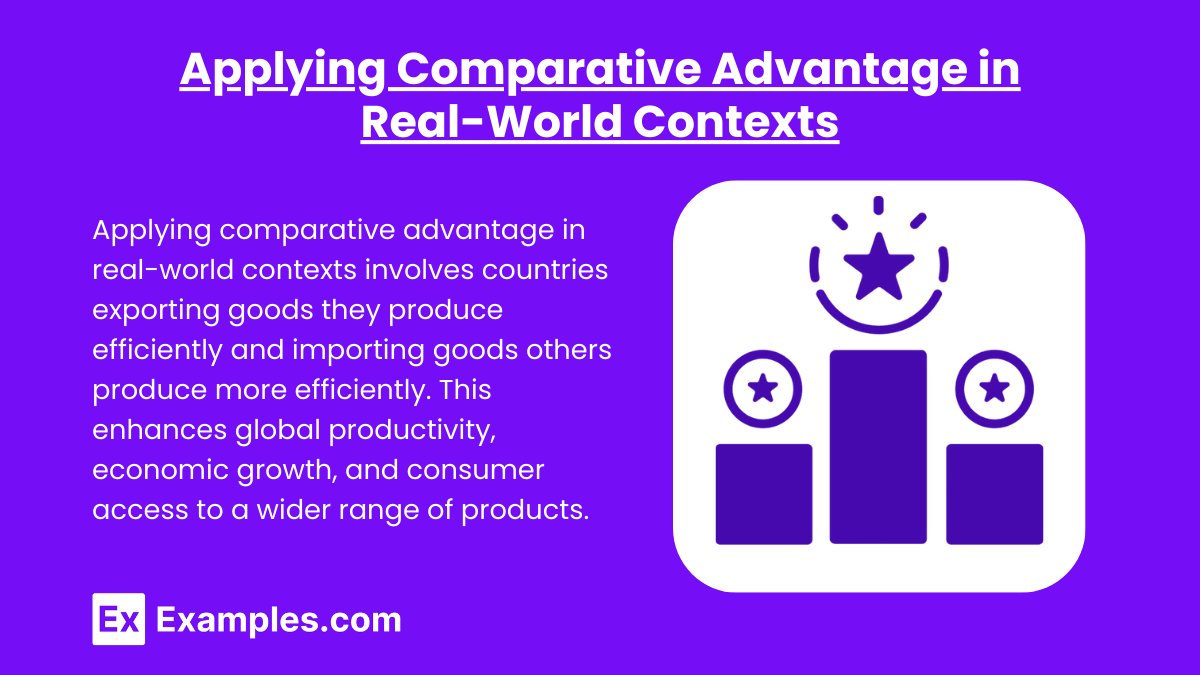
Understanding comparative advantage is vital for analyzing how countries interact in global markets. Countries export goods in which they have a comparative advantage and import goods where others have a comparative advantage. This boosts economic growth, enhances the standard of living, and increases consumer choice.
For the AP Macroeconomics exam:
- Be sure to differentiate between absolute and comparative advantage.
- Understand how specialization leads to more efficient production and mutual gains from trade.
- Practice using the PPC to demonstrate opportunity cost and trade benefits.
Examples
Example 1: U.S. and China
The U.S. specializes in high-tech products like software, while China focuses on manufacturing goods like electronics, benefiting both through trade.
Example 2: U.S. and China: Brazil and Canada
Brazil exports coffee due to its favorable climate, while Canada exports lumber, allowing each to benefit from their natural resources and trade efficiently.
Example 3: Japan and Australia
Japan specializes in electronics, while Australia exports minerals and agricultural products, improving both economies through their comparative advantages.
Example 4: India and Germany
India provides IT services at a lower cost, while Germany focuses on producing high-quality automobiles, both gaining from trade in their specialized sectors.
Example 5: Saudi Arabia and South Korea
Saudi Arabia exports oil, while South Korea produces technology, allowing both to specialize and trade for products they do not efficiently produce.
MCQs
Question 1
Which of the following best defines comparative advantage?
A) Producing more goods with fewer resources
B) Producing a good at a lower opportunity cost
C) Trading goods at the same price
D) Producing every good efficiently
Answer: B) Producing a good at a lower opportunity cost.
Explanation: Comparative advantage focuses on opportunity cost, meaning a country sacrifices less of one good to produce another, leading to more efficient production.
Question 2
What occurs when countries specialize based on comparative advantage?
A) Decreased total output
B) No changes in trade volume
C) Increased overall production and trade gains
D) Increased domestic costs
Answer: C) Increased overall production and trade gains.
Explanation: Specialization based on comparative advantage allows countries to produce efficiently, increasing total output and enabling mutual gains through trade.
Question 3
A country has a comparative advantage when it can produce a good:
A) Faster than any other country
B) At a higher quality
C) At a lower opportunity cost than others
D) Using the most advanced technology
Answer: C) At a lower opportunity cost than others.
Explanation: Comparative advantage is about producing at the lowest opportunity cost, allowing countries to specialize and trade for greater gains from trade.

